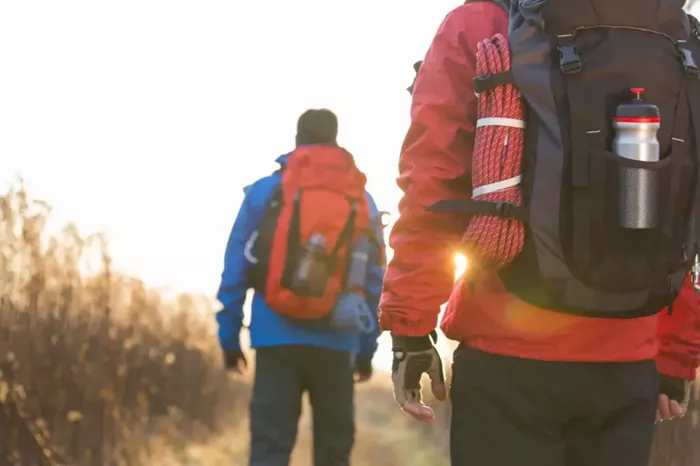Camping is fun. But wearing wrong clothes can ruin your trip. Good camping clothes keep you comfortable. They protect you from weather. They help you enjoy nature.
This guide will show you what to wear. We’ll cover all seasons. We’ll talk about materials. We’ll look at different weather conditions. Let’s begin.
The Layering System
Smart campers use layers. Layers help control body temperature. You can add or remove layers as needed. There are three main layers:
Base Layer (Next to Skin)
This layer touches your skin. It should wick sweat away. Synthetic fabrics or wool work best. Avoid cotton. Cotton stays wet and makes you cold.
Good options:
- Merino wool
- Polyester
- Nylon
Middle Layer (Insulation)
This layer keeps you warm. Fleece or down jackets are good. Choose based on weather.
Options include:
- Fleece jackets
- Down vests
- Synthetic insulated jackets
Outer Layer (Protection)
This layer blocks wind and rain. It should be waterproof but breathable.
Look for:
- Waterproof jackets with taped seams
- Rain pants
- Windbreakers
Clothing for Different Weather Conditions
Hot Weather Camping
In summer, focus on staying cool. Protect yourself from sun.
Top: Lightweight, long-sleeve shirt
- Blocks sun
- Loose fit for air flow
- Light colors reflect heat
Bottom: Quick-dry pants or shorts
- Convertible pants are versatile
- Avoid short shorts (bugs and scratches)
Extras:
- Wide-brim hat
- Sunglasses with UV protection
- Bandana (wet it to cool down)
Cold Weather Camping
Stay warm in cold conditions. Prevent hypothermia.
Top:
- Thermal base layer
- Fleece jacket
- Insulated waterproof coat
Bottom:
- Thermal leggings
- Insulated pants
- Waterproof shell pants
Extras:
- Warm hat (40% heat loss from head)
- Gloves or mittens
- Neck gaiter
Rainy Weather Camping
Stay dry to stay comfortable.
Must-haves:
- Waterproof jacket (not just water-resistant)
- Rain pants
- Waterproof boots
- Pack cover for your backpack
Tip: Bring extra socks. Wet feet lead to blisters.
Footwear for Camping
Good shoes are crucial. Your feet carry you everywhere.
Hiking Boots
Best for rough terrain. Offer ankle support. Choose waterproof ones.
Trail Shoes
Lighter than boots. Good for easy trails. Dry faster.
Camp Shoes
Comfortable shoes for around camp. Crocs or sandals work well.
Sock Tips:
- Wear liner socks under hiking socks
- Wool socks wick moisture
- Change socks daily
Special Considerations
Nighttime Clothing
Pack separate sleep clothes. Keep them dry. Good options:
- Clean base layer
- Warm socks
- Beanie for cold nights
Bug Protection
Bugs can ruin a trip. Protect yourself:
- Permethrin-treated clothes
- Light colors (attract fewer bugs)
- Long sleeves and pants
- Head net for bad areas
Sun Protection
Sunburn hurts. Prevent it:
- UPF-rated clothing
- Wide-brim hat
- Sunglasses
- Sunscreen for exposed skin
Material Guide
Not all fabrics are equal. Choose wisely.
Good Materials
Merino Wool:
- Natural
- Wicks moisture
- Resists odors
- Warm when wet
Synthetic Fabrics:
- Quick-drying
- Durable
- Affordable
Bad Materials
Cotton:
- Absorbs water
- Dries slowly
- Makes you cold
- Causes chafing
Denim:
- Heavy when wet
- Slow to dry
- Not flexible
Packing Tips
Don’t overpack. But bring essentials.
Must Pack:
- 1-2 base layers
- 1 insulation layer
- 1 outer layer
- 2-3 pairs socks
- 2-3 underwear
- Sleep clothes
- Hat and gloves (if cold)
Extras (optional):
- Gaiters (keep debris out of shoes)
- Down jacket (for cold nights)
- Swimsuit (for lakes/rivers)
Common Mistakes to Avoid
Many campers make these errors:
- Wearing jeans (they get wet and stay wet)
- Forgetting rain gear
- Wearing cotton socks
- Not bringing extra layers
- Wearing new boots (break them in first)
Seasonal Packing Lists
Summer Camping
- Lightweight shirts (2)
- Quick-dry pants/shorts
- Sun hat
- Light jacket (for cool nights)
- Sandals for camp
Spring/Fall Camping
- Base layers
- Fleece jacket
- Waterproof shell
- Warm hat
- Gloves
- Hiking pants
Winter Camping
- Heavy base layers
- Insulated jacket
- Snow pants
- Warm boots
- Thick gloves
- Balaclava
Kids’ Camping Clothes
Kids need special care. They get cold faster.
Tips:
- Pack extra clothes (kids get dirty)
- Bright colors (easy to spot)
- Comfortable shoes
- Warm pajamas
- Rain suit
Conclusion
Good camping clothes make trips better. They keep you comfortable. They protect you from elements. Remember to layer. Choose the right materials. Pack for the weather.
Invest in quality pieces. They last longer. They perform better. Your camping adventures will be more enjoyable with proper clothing.
Now you’re ready to pack. Get out there and enjoy nature!
Related topics:

